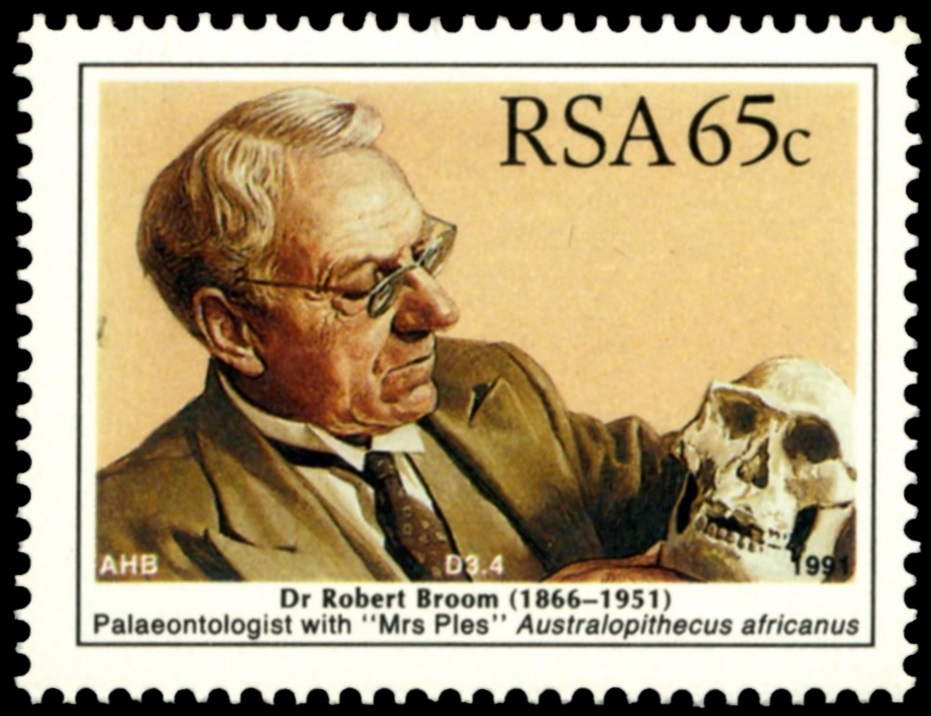|
 Sir
Arnold Thailer, 1867-1936 Sir
Arnold Thailer, 1867-1936
Arnold Theiler was born in Switzerland and came to South Africa in
1891. He settled as a veterinarian in the Transvaal, where he was
confronted.by a host of unknown stock diseases. His research
into the rinderpest epidemic of 1896 led to his appointment as state
veterinarian to the ZAR by President Kruger. His small laboratory at
Daspoort on the outskirts of Pretoria was the forerunner of the
world-famous Onderstepoort Veterinary Research Institute of which he
was the first director. His research on the causes and control of stock
diseases brought him international recognition. The blood parasite
responsible for East Coast fever, Theileria parva, was named after him.
His findings on deficiency diseases stimulated a worldwide study of
deficiency diseases and nutritional disturbances. In 1914 he was
knighted and received seven honorary doctorates and numerous awards. He
died in London in 1936 on the eve of the second international
microbiological congress in which he were to have taken part.
|
 Sir
Basil Schonland, 1896-1972 Sir
Basil Schonland, 1896-1972
Basil Frederick Jamieson Schonland was born in Grahamstown. He studied
at Rhodes University College and graduated in physical sciences at
Cambridge. In 1915 he enlisted in the Royal Engineers Corps and became
an authority on wireless telegraphy. In 1922 he became senior lecturer
in physics (later professor) at the University of Cape Town. His
research concentrated on cathode and cosmic rays and atmospheric
electricity, particularly lightning. Towards 1933 he was able to show,
with the help of a Boys rotating lens camera, that a lightning flash
consisted of a leader discharge stroke descending from the cloud and
much stronger main strokes returning to the cloud. He was the first
scientist to link radio atmospherics with lightning. In 1937 he became
director of the Bernard Price Institute for Geophysical Research and
during World War ll he developed radar for the SA Defence Force. He was
appointed superintendent of the British Army Operational Research Group
and became scientific adviser to Field Marshal Montgomery with the rank
of brigadier. On his return to South Africa he became the first
president of the newly established Council for Scientific and
Industrial Research. In 1954 he was appointed deputy director of the
Atomic Energy Research Establishment at Hawvell, England and in 1958 he
became director. He was a Fellow of the Royal Society and received
numerous honorary degrees and awards. He was knighted in 1960.
|
|
 Dr
Robert Broom, 1866-1951 Dr
Robert Broom, 1866-1951
Robert Broom obtained his BS0 and MB degrees at Glasgow
University. Because of his interest in palaeontology he
came to South
Africa as medical doctor in 1897. From 1903 to 1910 he was a professor
in the departments of zoology and geology at the Victoria College (now
the University of Stellenbosch). During this time he published numerous
papers on fossilised
remains of mammal-like reptiles which inhabited
the Karoo more
than 200 million years ago. His research showed that these remarkable
fossils were in fact a link between reptiles and the earliest mammals.
In 1934 he accepted a post at the Transvaal Museum in Pretoria, where
he undertook research on hominid fossils from Sterkfontein and other
sites near Krugersdorp. Awell-preserved skull discovered at
Sterkfontein in 1947 was given the nickname Mrs Ples, after the genus
Plesianthropus (almost manl. It is thought to be about 2,5 million
years old. This specimen and others like it are now referred to as
Australopithecus africanus, a species first described by Raymond Dart
from a skull discovered at Taung. Dr Broom was elected a Fellow of the
Royal Society and received numerous honorary degrees for his
palaeontological research. A hundred years after his birth the Robert
Broom (Museum was opened at Sterkfontein. Additional exhibits relating
to Dr Broom's work are on display at the Transvaal Museum in Pretoria.
|
 Dr
Alex du Toit, 1878-1948 Dr
Alex du Toit, 1878-1948
Alexander Logie du Toit was born in Cape Town. After obtaining the BA
(Hons) degree with distinction atthe then South African College, he
graduated in mining engineering
at the Royal Technical College in Glasgow and in geology at the Royal
College of Science in London. At the age of tvventy-three he was
appointed lecturer in geology at the Royal Technical College and the
Glasgow University. In 1903 he joined the Cape Geo-
logical Commission and geologically mapped the entire Karoo System
underlying South Africa within an exceptionally short period. In 1927
he became chief consulting geologist to De Beers Consolidated Mines. He
made a very important contribution to
the theory of the history of the earth's crust in terms of continental
drift and plate tectonics through his book, OUR WANDERING CONT/NENTS:
An Hypothesis of Continental Drifting (Edinburgh, 1937l. He was elected
a Fellow of the Royal Society an
numerous honorary doctorates and awards were conferred upon him. He is
widely srecognized as an outstanding field geologist..
|







